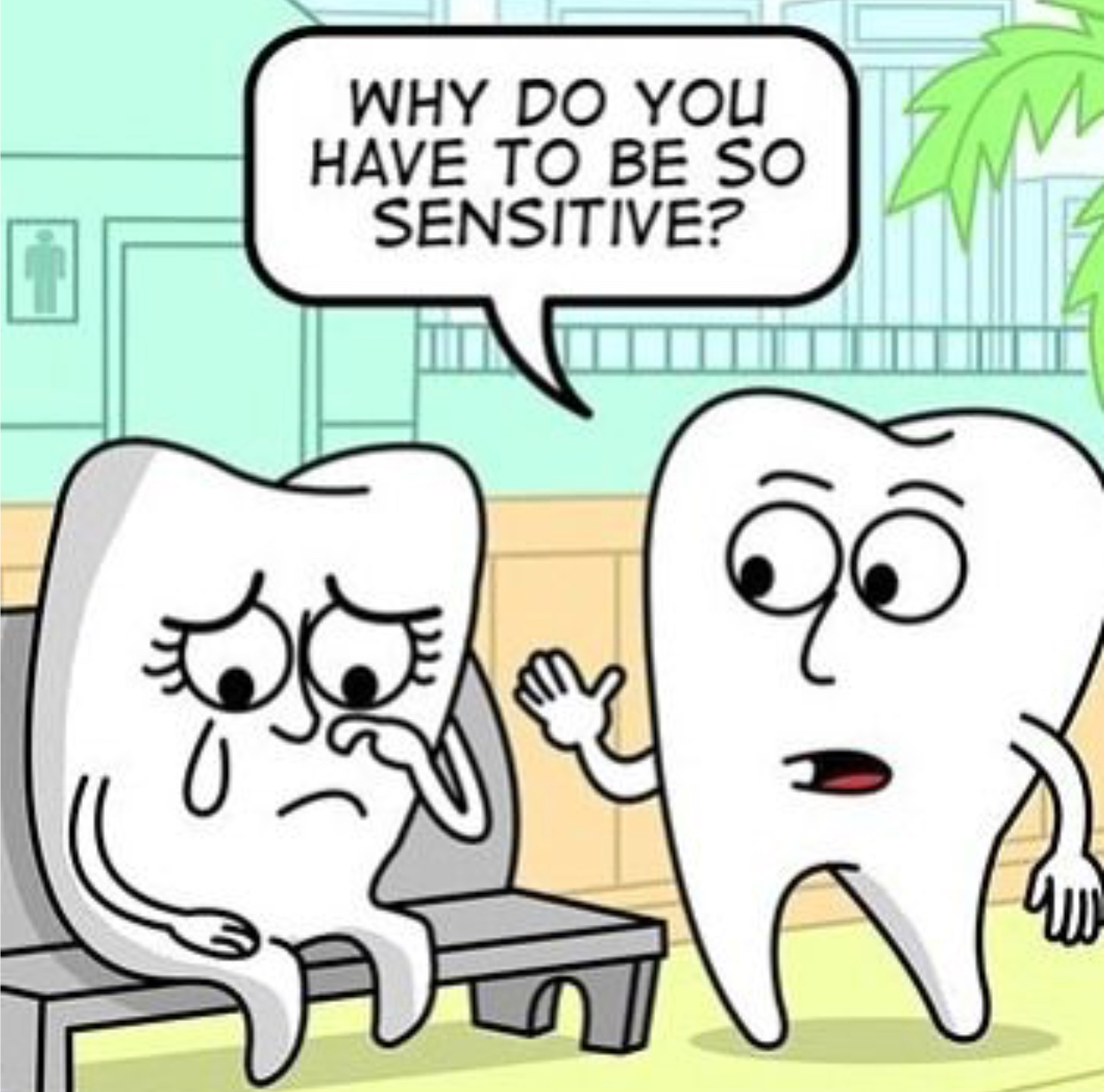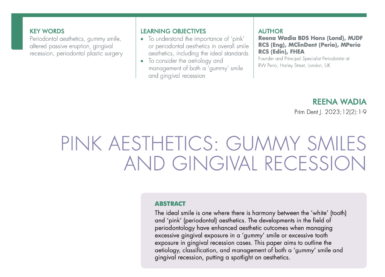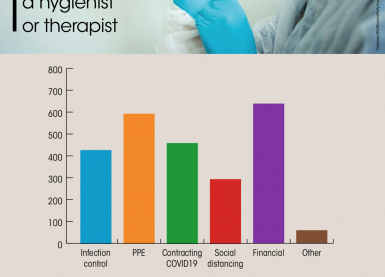June 21, 2020

Dental erosion and associated dentine hypersensitivity has been increasing for several years. With people living for longer and retaining their teeth for longer it is only going to become more prevalent.
2. We need to be able to recognise early erosive toothwear. Patients usually only notice tooth wear when the dentine becomes exposed i.e. the tooth is chipped or looks more yellow – it is often more difficult to treat at this stage. Early diagnosis is difficult but critical in order to implement preventative measures and preserve tooth tissue.
3. Take your patient’s age into account. In old age, we would expect some physiological tooth wear. Tooth wear in a young patient would be seen as pathological rather than physiological.
4. Use the BEWE (Basic Erosive Wear Examination) to record tooth wear for all your patients. This is likely to become an NHS requirement in the near future. The BEWE uses a 4 point scale to assess wear and the most severely worn surface is scored in each sextant: 0 = no erosive tooth wear, 1 = initial loss of surface texture, 2 = distinct defect, minor loss hard tissue, <50% surface area, 3 = hard tissue loss or more or equal than 50% of the area surface (Bartlett 2008). The cumulative score of all the sextants can then be used to determine the risk level and corresponding management.
5. 85% of patients with tooth wear will present with some degree of sensitivity and severity of toothwear is correlated with the prevalence of dentine hypersensitivity.
6. To get dentine hypersensitivity you need dentine exposure AND tubule exposure. Dentine exposure (lesion localisation) can occur through soft tissue loss (gingival recession) or enamel/dentine tissue loss (abrasion/erosion). Tubule exposure (lesion initiation) can occur through erosion and abrasion.
7. Be aware of the key risk factors and give appropriate preventative advice:
- Acidic soft drinks: Beverage sizes have grown significantly over the years and carbonates are the largest drink category in the UK with 43% market share. Young adults in the UK drink on average 1 L (3 cans) of acidic beverage per day. Advise patients to reduce the frequency of consumption as well as the duration of exposure. Patients should avoid beverages in the evening when salivary flow is reduced.
- Acidic foods: A food diary covering working as well as non-working days can be helpful. Look out for those less obvious food items in your patient’s diet e.g. roasted peppers are very acidic! Ensure any chewing gum is not an fruity/acid-based as this can increase the rate of erosion. (Paice et al 2012). Advise patients to neutralise mouths after acidic foods by having milk, cheese etc.
- Oral hygiene practices: normal twice daily toothbrushing is not a risk factor. It becomes a problem when patients are brushing excessively in terms of frequency and force. All toothpastes in the UK should be safe to use in terms RDA value (should be <250). Brushing immediately after an acidic challenge should be avoided especially in those susceptible patients. Enamel repair commences within 2 hours following a substantial acidic challenge and completed 4 – 24 hours later (Seong 2015).
- Dyspepsia: The NICE clinical guidelines (2004) defined dyspepsia as any symptom of the upper GI tract, present for 4 weeks or more, including upper abdominal pain or discomfort, heartburn, acid reflux, nausea or vomiting. Annual dyspepsia occurs in 40% of the population and often goes unmanaged. Advise your patient to seek care from their GP.
- Hyposalivation: Assume this if patient’s are on 3 or more medications. This will also be a problem in those undergoing radiotherapy, those with Sjogren’s disease and rheumatoid arthritis. Be aware that low salivary flow may increase susceptibility to erosion. Interestingly different positioning of teeth in the arch may provide different susceptibilities of the tooth surface to erosion – close proximity to the major salivary glands reduces risk (Lussi et al 2012).
8. Management:
- Use the least invasive therapy.
- Topical fluoride products – self or professionally applied. Dentifrices containing fluoride and polyvalent metal fluoride interact with the tooth surface to form an acid-resistant insoluble layer.
- Restorative materials and bonding systems should only used if absolutely necessary due to sensitivity, aesthetic consideration or functional problems. It should only be preceded by or used in conjunction with preventive strategies.
9. Follow up and reassessment must be performed regularly in the future to assess if wear has been halted or is still progressing. Refer complex cases of tooth wear to a specialist.
10. Bonus tip: If you want to perform supragingival scaling on teeth with dentine hypersensitivity, rub prophy polish (ideally the one for sensitivity) onto the surfaces of the teeth and then perform the procedure. This usually means you can avoid administering local anaesthesia.
These notes were derived from a webinar produced by the British Society of Periodontology. Further resources can be found at: www.bsperio.org.uk.



